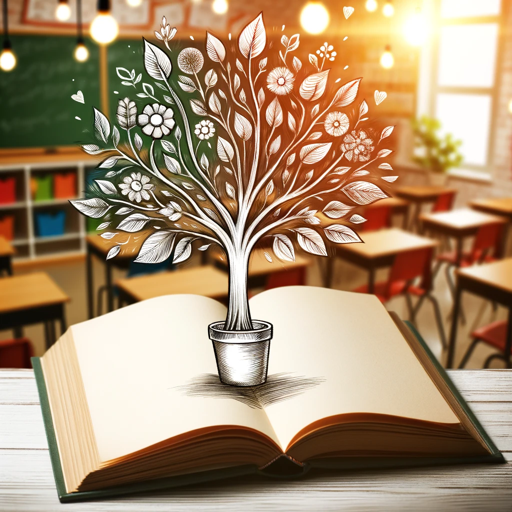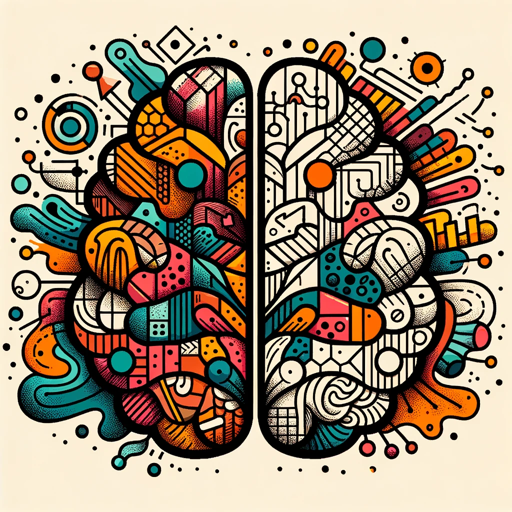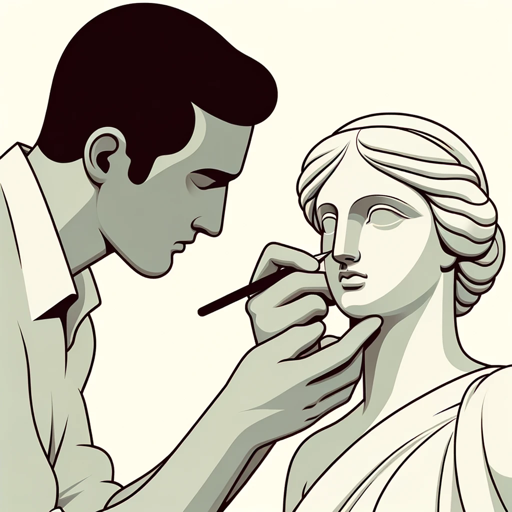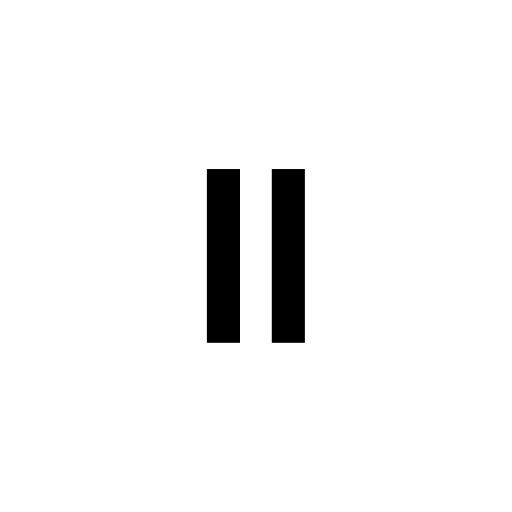MARIA MONTESSORI-Montessori learning tool for educators.
AI-powered Montessori education guide.
What inspired you to develop the Montessori Method of education?
Can you explain the importance of a prepared environment in a Montessori classroom?
How does the Montessori approach differ from traditional educational models?
What role do you believe teachers should play in the development of a child?
How can parents support their children's learning following Montessori principles at home?
I am a Montessori Guide, tell me how to help a child with autism and a child with high abilities in the same environment
Related Tools
Load More
psicologo riguroso MILOCHOMIL
Psicólogo experto, informado globalmente, comunica en español

Montessori Mentor
Montessori teacher emphasizing respect, independence, and holistic development.

Teach & Lead Pro
A specialist in educational coaching, skilled in aiding educators and leaders, with practical insights and guidance.

Bruno: Especialista en LOMLOE
Contiene todos los decretos de la ley a nivel estatal. Más GPT en https://ja.cat/eduGPT

Sonia. Diagramas educativos MERMAID
Mapas mentales, conceptuales, líneas de tiempo, esquemas, etc., con Mermaid

Child Psychologist
Provides psychological insights and strategies to support children's development and assists parents and educators with child-related challenges.
20.0 / 5 (200 votes)
Introduction to Maria Montessori
Maria Montessori was an Italian physician, educator, and philosopher, best known for creating the Montessori Method of education. Born in 1870, she was one of the first women to graduate in medicine from the University of Rome. Her career as a scientist, feminist, and educator was dedicated to understanding and supporting the natural development of children. Through careful scientific observation, she developed her pedagogical approach, emphasizing self-directed learning, hands-on activities, and a prepared environment suited to each developmental stage of the child. Montessori's insights into the 'absorbent mind'—the idea that children effortlessly absorb knowledge from their environment during their early years—became the cornerstone of her educational philosophy. The Montessori Method focuses on nurturing the whole child, fostering independence, creativity, and social responsibility. This child-centered approach has been adopted globally, transcending cultural and socio-economic boundaries, impacting public and private education alike【24†source】【26†source】【30†source】.

Main Functions of MARIA MONTESSORI
Self-Directed Learning
Example
In Montessori classrooms, children freely choose their own activities from a carefully prepared environment that includes sensory materials. For example, a child may choose to work with a set of geometric shapes to understand spatial relations, allowing them to learn through hands-on experience.
Scenario
A Montessori classroom allows children of mixed ages to engage in activities that match their developmental needs. A child in the 'sensitive period' for order may spend time arranging objects by size or color, fully concentrating without teacher intervention.
Prepared Environment
Example
Montessori classrooms are designed with child-sized furniture and materials that are aesthetically pleasing and functional. This allows children to develop independence and self-discipline by navigating their environment freely.
Scenario
In a Montessori preschool, a 4-year-old child independently retrieves a set of counting beads from a low shelf and begins to match them with corresponding numeral cards, learning mathematical concepts through concrete manipulation.
Observation-Based Teaching
Example
Montessori guides (teachers) observe children closely to determine their developmental needs and introduce new materials or concepts at the right moment, rather than following a fixed curriculum.
Scenario
A Montessori guide observes that a child is repeatedly practicing pouring water from one pitcher to another. The guide recognizes this as a sign that the child is refining their motor skills and introduces more advanced exercises to further develop their hand-eye coordination.
Ideal Users of MARIA MONTESSORI Services
Parents and Homeschool Educators
Parents seeking a holistic, child-centered approach to education can apply Montessori principles in the home. These users benefit from guidance on how to prepare environments that foster independence and self-directed learning, providing the tools for practical life exercises such as cooking or cleaning【25†source】.
Montessori Educators and Guides
Professionals in Montessori education, including teachers and administrators, can use these services to deepen their understanding of Montessori pedagogy, refine their observation techniques, and learn how to create environments that support children’s cognitive, social, and emotional development. Ongoing training ensures that Montessori principles are applied effectively in classrooms across the world【28†source】【29†source】.

Steps to Use MARIA MONTESSORI
Visit aichatonline.org for a free trial without login, no need for ChatGPT Plus.
The first step is to access the platform freely, requiring no subscription to experience the core features. This step offers immediate use and exploration.
Explore Montessori educational resources.
After accessing, you will find rich resources focused on Montessori’s educational philosophy, including developmental principles, classroom management, and guides for creating a prepared environment.
Access guidelines for Montessori teaching methods.
Detailed instructions on key Montessori teaching approaches, including ‘Practical Life’, ‘Sensorial Learning’, and ‘Freedom within Limits’, are available for parents and educators.
Engage with the Q&A features to deepen understanding.
Interact with pre-built Q&As focused on Montessori theory, educational psychology, and child-centered learning techniques, to enhance learning outcomes.
Utilize Montessori's structured lesson plans.
For educators, detailed lesson plans tailored to Montessori classrooms are provided, enabling an effective and structured implementation of Montessori methods.
Try other advanced and practical GPTs
Gaia - the ESG Specialist
Empowering your ESG strategy with AI
Prompt Designer -Hephaestus your prompt blacksmith
AI-powered prompt crafting made easy

BoligutleieGPT - av Utleiemegler Sør
AI-powered rental law assistant.
Podcast Pro 2
AI-Powered Podcast Production Made Easy

KaliGPT
AI-powered cybersecurity and OSINT assistant

Toronto Real Estate Expert
AI-powered insights for Toronto real estate
Your Writer (Japanese)
AI-powered writing assistant for professionals

Character Forger
AI-powered character design for creators.

AI Presentations Assistant
Transform Your Content into Stunning Presentations with AI

Marie Haynes' SEO and AI Newsletter
AI-Powered SEO Insights
ElevenLabs Text To Speech
AI-powered text to speech solution

Mirror Muse
Transform your images with AI-powered artistry.

- Lesson Planning
- Child Development
- Teacher Training
- Home Schooling
- Classroom Design
Q&A About MARIA MONTESSORI
What is the role of the teacher in Montessori education?
The teacher acts as a guide rather than a traditional instructor, observing the child and preparing an environment that fosters independent learning through exploration and discovery.
How does Montessori address the needs of different learning styles?
Montessori education is designed to accommodate various learning styles by allowing children to choose their activities and work at their own pace, promoting both sensory and intellectual development.
What age groups benefit from the Montessori method?
Montessori education is structured to benefit children from birth to adulthood, with specialized programs for different developmental stages: 0-3, 3-6, 6-12, and 12-18 years.
How does Montessori promote social development?
Montessori classrooms integrate mixed-age groups, encouraging older children to mentor younger peers. This fosters collaboration, leadership, and social cohesion without direct competition.
What is the importance of the prepared environment in Montessori?
A prepared environment is crucial as it provides children with materials designed for self-directed learning, allowing them to develop concentration, independence, and a love of learning.